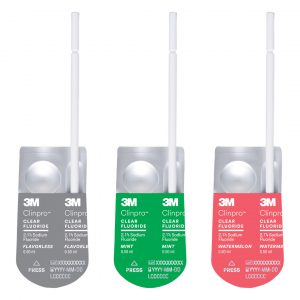Dental unit waterlines are great incubators for Bateria and it is important to have the right meathod and tools in place.
With that in mind dental practices need to keep bacterial numbers as low as possible. The ADA recommended threshold is no more than 500 colony forming units per mL (CFU/mL) for non-surgical dental procedures which is a widely used international limit for safe drinking water and is recommended that the water from the dental unit waterlines contain less than 200 CFU/mL when treating medically compromised patients.
Planning to inform your waterline Treatment
Every clinical setting will place different requirements on its dental water compliance plan but your plan should cover (at least) the following:
-
What Good Waterline Treatment Results Look Like?
-
Practice Treatment History and Dental Unit Configuration
-
Water Source: Tap vs. Distilled
-
Formulate a System for Training Staff
-
Test Methods and Intervals
What Does Success Look Like?
The below points outline what makes dental water suitable for use:
-
Use water that meets the recommended limit for dental procedural water (i.e., <500 CFU/mL of heterotrophic water bacteria) for routine dental treatment.
-
Consult with the dental unit manufacturer for appropriate methods and equipment to maintain the recommended quality of dental water.
-
Follow recommendations for monitoring water quality provided by the manufacturer of the unit or waterline treatment product.
-
Discharge water and air for a minimum of 20–30 seconds after each patient, from any device connected to the dental water system that enters the patient’s mouth (e.g., handpieces, ultrasonic scalers, and air/water syringes).
-
Maintain periodic maintenance of anti-retraction mechanisms as specified by dental unit manufacturers.
Practice Waterline Treatment History and Setup
By establishing a baseline from past efforts the practice can gather important information such as potential chemical interactions and current biofilm contamination. Regardless of the treatment product you select, you should be thinking about shocking more than once. We’ll cover shocking in more detail in the treatment methods section.
These are also referred to as ‘Dead Legs’. A Dead End or Leg is a length of pipe closed at one end which does not allow water to pass.
What type of source water are you going to use?
The Water delivery type is essential to optimising your treatment program.
These delivery types include Tank Distilled Water and Main Water (City water).
Distilled Water has a consistent purity. Treatments relying on trace or residual amounts of chemicals for both safety and long-term treatment efficacy will maintain more consistent results when using distilled water.
Municipal Water, or Tap Water, is cost effective and convenient is not suitable in most cases for a medical environments. Tap water varies in contaminents from council to council, and although some water quality assessments taken it would be safety to double check on the concentration of pollutants. If your tap water has morethan 250ppm TDS, you will need to employ meathods to improve that water quality.
Chosing a Treatment
EPA registration for dental waterline treatment is what you want to look out for in the product labelling. Always go with a product that is validated for use in the dental unit and EPA approved. You can find that information on their EPA label. Use the EPA Website to find the level of dissinfection of products – the EPA.gov site
It may be a good plan to include more than one Shock Treatment during the initial implementation and prior to your first water test. It may also be beneficial to remove your handpieces to prevent biofilms released from the shock treatment clogging up your handpieces.














